Photo Essay: India and US Leaders Meet in New York to Spur Local Climate Resilience Action - Part 2
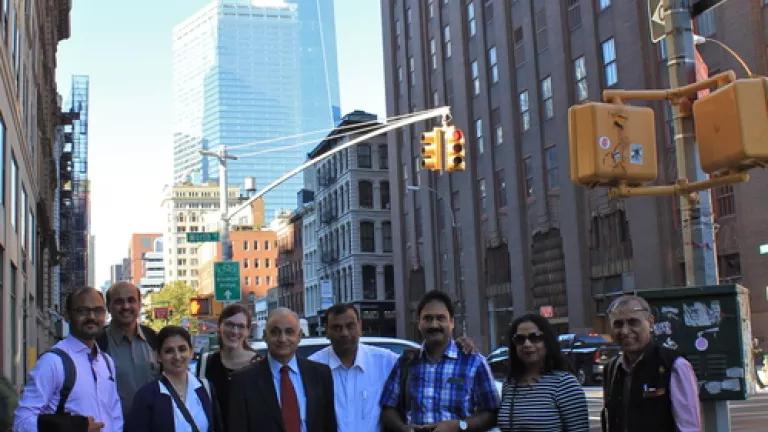
In this two part blog series, Part 1 highlighted the climate and heat resilience and emergency preparedness efforts underway in India and the U.S., particularly NYC. This Part 2 focuses on how experts in the academic, meteorological and health fields lead and support climate resilience efforts in concert with the government.
"The most useful evidence for local decision makers is local evidence. Developing a local evidence base is a prerequisite for action." ~ Dr. Patrick Kinney, Columbia University's Mailman School of Public Health
Setting the tone for Climate Week NYC, key government, academic and civil society leaders from India met with their counterparts in New York last month to discuss best practices on climate health and preparedness. One major topic was the scaling of local climate adaptation efforts across cities from Ahmedabad, India to New York City to protect vulnerable communities from extreme weather events including increasingly prevalent and severe heat waves. This delegation of climate health leaders has since convened in Nagpur last week to support that city's effort to become the first city in Maharashtra (and second city in India) to adopt a heat early warning system and preparedness plan by end of this year.
India experienced a devastating heat wave in May, causing more than 2,300 deaths across the country and emphasizing the urgent need for greater climate change preparedness. With NRDC and partners, the city of Ahmedabad in western India launched a Heat Action Plan in 2013, becoming the first early warning system and preparedness plan for extreme heat events in South Asia, and an example of local climate resilience in action.
The gathering in NYC of experts and leaders from the US and India was part of the "India-US Climate Resilience Partnership: High-Level Knowledge Leadership Exchange Forum on Heat-Health and Climate Preparedness," hosted by NRDC, the Public Health Foundation of India-the Indian Institute of Public Health (IIPH) and the Icahn School of Medicine at Mount Sinai, and supported by the Indo-US Science & Technology Forum (IUSSTF). Lead hosts included NRDC's Anjali Jaiswal, Dr. Kim Knowlton, Meredith Connolly and Sameer Kwatra, Mount Sinai's Dr. Perry Sheffield, and IIPH's Dr. Partha Ganguly, Dr. Priya Dutta and Dr. Abhiyant Tiwari.
While temperature extremes like heat waves are a major climate risk facing New York City, a reoccuring theme of the week's meetings was another climate-fueled natural disaster that had devastated many of the city's coastlines, infrastructure, power grid and caused a major evacuation effort of many of its hospitals in 2012: Hurricane Sandy. Dubbed Frankenstorm, this hurricane hit the city with very little warning and time to prepare, resulting in at least 149 deaths, destruction of thousands of homes and an estimate 250,000 vehicles, and economic losses across New York totaling at least $18 billion. Many New Yorkers described this "superstorm" as a wake up call that the city needed stronger resilience planning for climate-fueled disasters in the future.
The following photos offer highlights of the second half of the peer-to-peer learning and knowledge exchange in New York City, particularly partnerships and efforts by academic experts, government and community leaders to strengthen climate resilience and public health in India and New York.
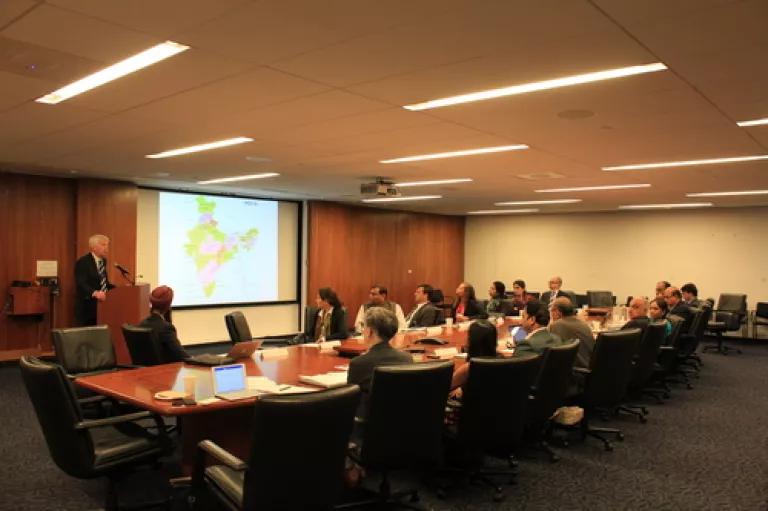
At Mount Sinai's Icahn School of Medicine, an overarching theme was the enormous benefits of embedding emergency management into the public health system, ensuring effective preparation and a consistent flow of information.
Dr. Phil Landrigan, Dean for Global Health at Mount Sinai's Icahn School of Medicine, welcomed the delegates and underscored the need for the U.S. and India to share experiences and lessons from the pressing climate crisis, which transcends boundaries. Dr. Prabhjot Singh, Director of Arnhold Institute for Global Health, highlighted the lesson of Chicago's historic heat wave in 1995 (which killed 139 people) as a tragic example "in high resolution" of the consequences of not being prepared and the vital importance of early warning systems and preparedness plans.
Dr. Singh's point was underscored by a presentation by Dr. Suresh Patel, hospital superintendent of Ahmedabad Municipal Corporation, on the decreased mortality measured in the city of Ahmedabad following implementation of a heat action plan in 2013. This plan helped prepare the government and vulnerable residents before future heat waves through awareness building, increasing medical capacity and an early warning system.
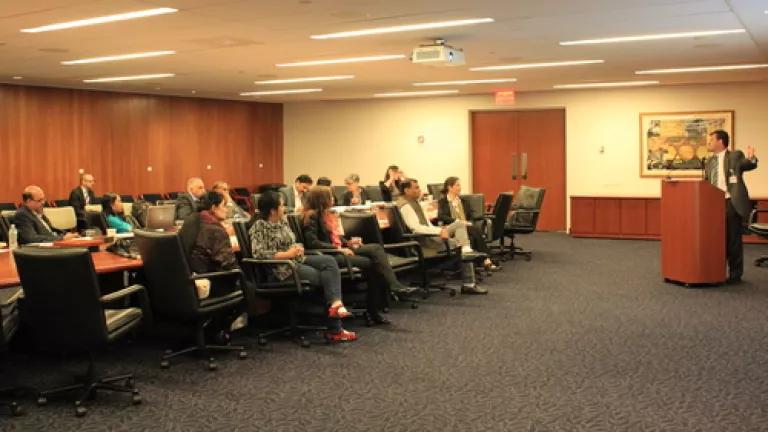
New York City's approach to climate incident emergency management was described by Dr. Nick Cagliuso, Assistant Vice President of Emergency Management at NYC Health & Hospitals Corporation. Dr. Kevin Chason, Director of Mount Sinai Health System Emergency Planning, highlighted how Superstorm Sandy put the hospital's all-hazards preparations to the test in 2013. Multiple hospitals were flooded and evacuated including New York University's Langone Medical Center and Bellevue Hospital Center - the largest hospital in the country.
Asante Shipp Hilts from the Office of Public Health Practice within New York State's Department of Health described her department's BRACE program, centered on "building resilience against climate events." Under this program, the state health department is developing toolkits for local county health departments to create their own climate-health awareness materials tailored to local constituents.

Officials from the National Oceanic and Atmospheric Administration (NOAA) joined delegates to share expertise on climate forecasting and its intersections with protecting public health. Environmental forecast services enable healthy communities and ecosystems, according to Michelle Hawkins of NOAA's National Weather Service (NWS). Social media also enables NWS to reach millions of followers. The NWS' current Heat Forecast Predictions provide short to medium range forecasts, down to the minutes and hours, in addition to long range and climate forecasts - which can provide hazard warnings 3-14 days ahead of time.
Juli Trtanj, the NOAA One Health and Integrated Climate and Weather Extremes Research Lead within NOAA's Climate Program Office, described how NOAA is preparing for increasing heat due to climate change. Creation of a National Integrated Heat Health Information System is underway to enable NOAA to provide forecasting tools that the Center for Disease Control, public health officials and emergency management officials need to inform early warnings and early action to protect people.
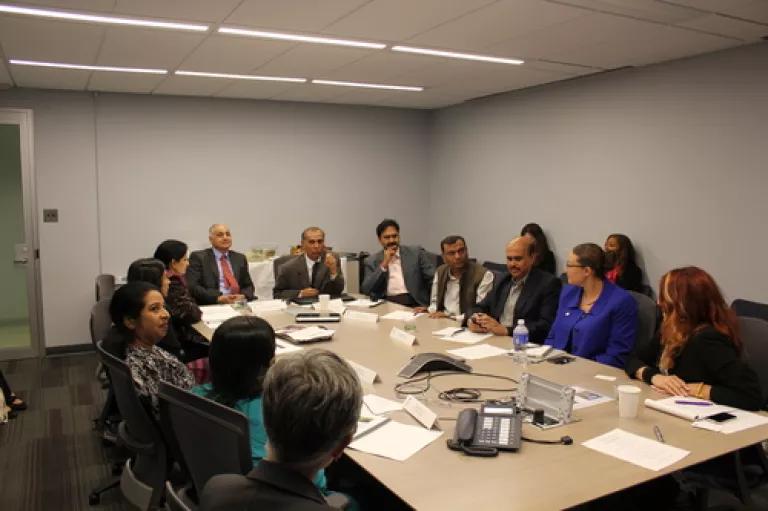
Dr. L S Rathore, Director-General of Meteorology for the Indian Meteorological Department (IMD), described how health is one of the newest initiatives emerging from his 140 year old institution. Unlike the U.S., India has an official definition of a heat wave, dating back to 1979. One effort aimed at improving local data flow are "Nowcasts," which provide short range forecasts for 136 cities around the country. Another recent change, IMD also provides forecasts up to 5 days ahead - which is a key component of effective early warning systems that used to rely on 2 day forecasts - but Dr. Rathore cautioned that forecasts beyond 5 days are too unpredictable to rely on in India's climate.
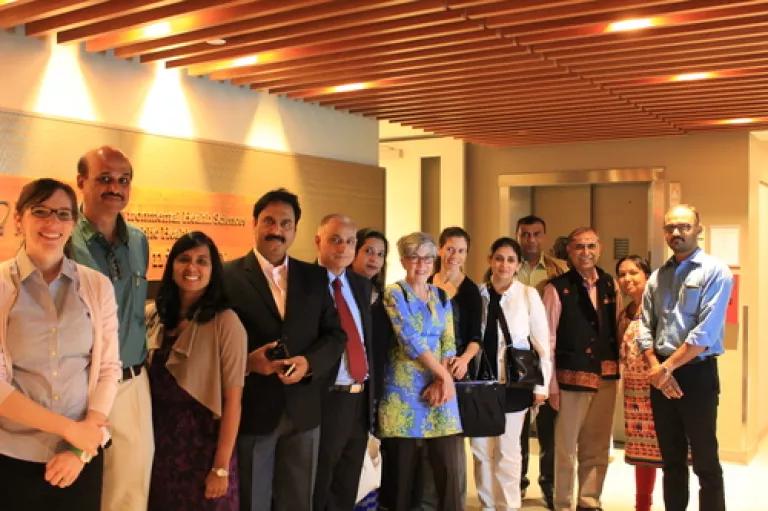
The following day, delegates met with experts at Columbia University's Mailman School of Public Health, which created the nation's first academic program in climate and health. A primary takeaway was how enabling governments to tap into public health institutions' wealth of knowledge by incorporating them into the fabric of government processes can create better policies. As Maharashtra State Public Health Secretary Sujata Saunik said about the city of Nagpur's efforts to develop its first Heat Action Plan, "we see how well-analyzed data and evidence leads to better policy."
Mailman SPH Dean Linda Fried welcomed the delegates and explained how critical science and research are to understand the ways that climate change impact human health, which can in turn propel well-informed policies. Dr. Pat Kinney, director of Mailman's Climate and Health Program, has studied the health effects of rising temperatures in Manhattan, projected increased mortality in the future. Dr. Thomas Guilarte, head of Mailman's Environmental Health Department, made clear the urgency of addressing air pollution, which is tied to extreme heat events. He cited a scientific article in Nature that finds there are more than 3 million premature deaths globally every year due to outdoor air pollution. By 2050, that number is expected to double to 6 million premature deaths - unless proactive work to address climate resilience and public health can change that projection and ensure the next generation leads healthier lives.
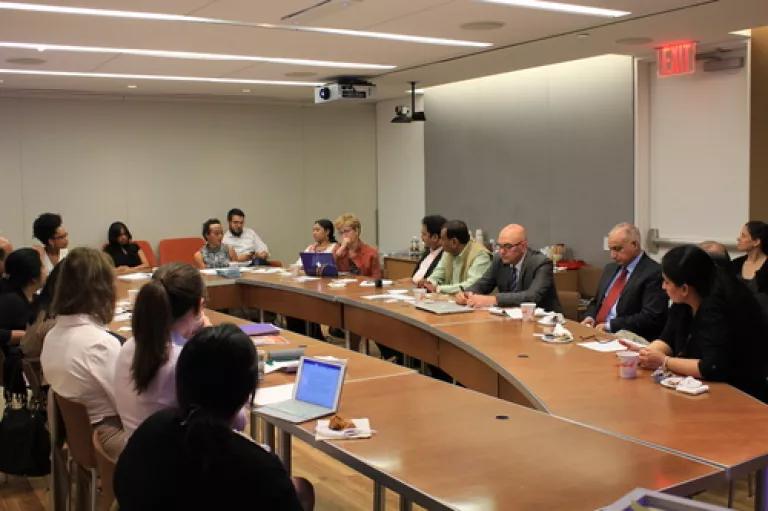
Katherine Greig, senior policy advisor in Mayor's Office of Recovery and Resiliency, described how the NYC Panel on Climate Change teamed up with academic institutions to ensure the latest science was informing the city's climate plan projections. Community engagement was another critical aspect of climate resilience, and she underlined the example of people checking on each other during heat waves. Peggy Sheppard, director of the West Harlem-based environmental justice group WE ACT, described community roundtables her group organized to identify what the city could do to protect vulnerable, poor and disabled residents during extreme heat events. Dr. Lipika Nanda, director of the Indian Institute of Public Health, Bhubaneswar, spoke about how her state of Odisha specifically engages outdoor laborers, who are also particularly at risk when heat waves strike, in addition to other proactive heat resilience measures.

The Knowledge Exchange Forum concluded with an in-depth tour of the historic Bellevue Hospital Center by Dr. Bill Rom, professor of medicine and environmental medicine at New York University School of Medicine. Bellevue is the oldest hospital in the U.S. and the largest as well, serving many of NYC's most vulnerable residents.
Highlights included:
- Touring the World Trade Center Asthma and Dust Units with its founder Dr. Dr. Joan Reibman, where the majority of the victims of WTC dust inhalation are treated;
- Getting a preview of the soon-to-open Dr. William Rom Environmental Lung Disease Research Lab, led by Dr. Rom; and
- Learning about the hospital's flooding and other impacts of Superstorm Sandy - including the heroic evacuation of 500 patients down several flights of stairs by doctors, staff and the National Guard - and all the measures undertaken now to make the hospital more resilient against future climate threats.
Stay tuned for progress on cities and states around the country taking further leadership to increase climate resilience through heat action plans and other proactive policies.
Photo credit: All photos are © Meredith Connolly, NRDC